aNewDomain.net — About a mile from the GooglePlex, at the corner of Shoreline and the 101, is the Computer History Museum.
Funded initially by Apple co-founder Steve Wozniak and other investors, this is a museum dedicated to the history of the way humans have implemented mechanical, electrical, analog and digital computers through time. And it is a testament to how the innovation in this space in the last 50 years has outpaced everything that came before. This story includes a ton of photos I took for you, so you can feel like you were there. Check them out.

You can check out the museum’s YouTube channel here. I’ve spent a lot of time there — and lots of industry events have taken place there over the years. Wozniak, for instance, had his 60th birthday party — the theme and the t-shirt were Woz 6.0. Our edit director and Wozniak biographer, Gina Smith, and a few other team members here in San Francisco joined in on the festivities. Below, that’s investment banker and friend to aNewDomain Bruce Tanis with Gina and Steve at the birthday bash. Photo: Gina Smith for aNewDomain.net.

I attended a talk given by Bob Metcalf, the inventor of Ethernet and founder of 3com Corp. He told us that Xerox was going to call Ethernet by a different name — Xerox Wire — and he even showed a 1970s TV commercial the company never aired that promoted that name.
It turned out Xerox execs changed its mind about getting into the wire business. So when IBM and Digital approached Xerox about sharing the spec Metcalf and hiss team created at Xerox Palo Alto Research Center (PARC) — the point was to create an interoperable networking standard — they all agreed to the DIX specification. The partners published it for free via IEEE so no one would get sued, he said.
But damned if IBM and Digital were going to call it the Xerox Wire. So they picked the lab slang “ethernet” as the collaborative name. And it stuck.
Another strange event I saw was Google chief Eric Schmidt interviewing Facebook chieftain Sheryl Sandberg about her book Lean In. What fun. Schmidt and Sandberg shared the stage as competitors — and they did it congenially. You can find that on the YouTube channel, too.
In the new exhibit — called the First 2000 Years of Computing — examples of machines from ancient civilizations like the Inca Quipu (knotted record keeping) and a number of variants on the abacus from China, Japan, and Korea take the stage.
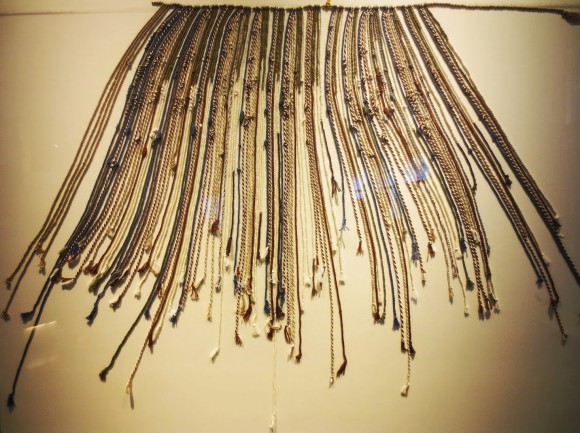
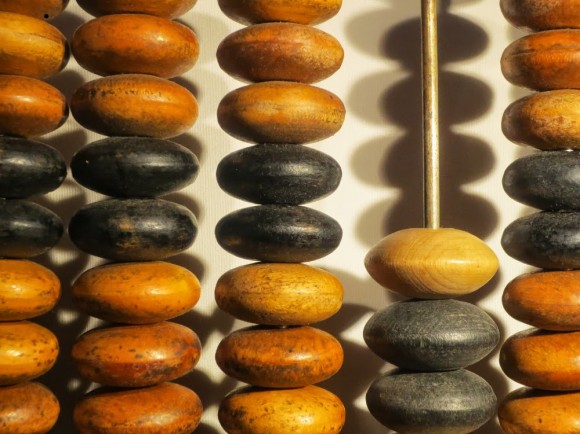
Photo credit: Richard Hay for aNewDomain.net
It’s interesting to see the historical devices people used to record and calculate. Even more interesting is to check out the origins of logic theory and the theories of operation for modern computing.
At the museum, you’ll see devices from the dawn of the Renaissance — like the replica of the Schickard Calculator from 1623. Schickard only ever made two. One he made for his friend and astronomer, the legendary Johannes Kepler. That was supposedly destroyed in a fire, and the other is lost. Artists built the replica, below, from sketches in Schickard’s notebooks.

Photo credit: Richard Hay for aNewDomain.net
Check out the mechanical adding machines of the nineteenth century, below.
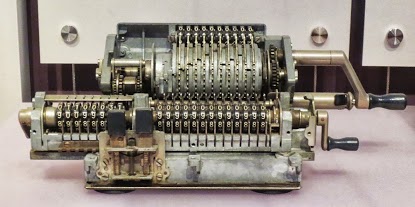
Photo Credit: Richard Hay for aNewDomain.net
The first instances of International Business Machines (IBM) products were mechanical devices — pre-electrical. Here’s an early typewriter.

Photo credit: Richard Hay for aNewDomain.net
Of course there are samples of the post World War II era vacuum tube type computers.

Photo credit: Richard Hay for aNewDomain.net
The history of computing has used eye candy in marketing materials since the first machines were marketed. It doesn’t matter, perhaps, that the developers of the first truly digitial computer, the ENIAC, were almost exclusively female. Look at this old ad.

Photo credit: Richard Hay for aNewDomain.net
The historical development of card readers to store and execute programs using stacks of punch cards is most visual when it’s stacked right in front of you.

Photo credit: Richard Hay for aNewDomain.net
Look at the yarn weave of the cabling innards of the Cray 3 Super Computer.
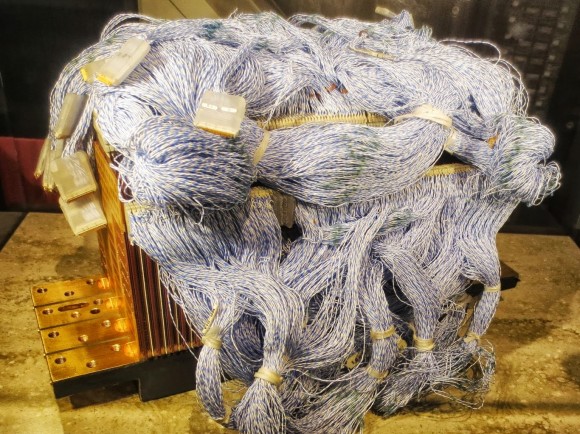
Photo credit: Richard Hay for aNewDomain.net
The first floppy disk was the 8-inch floppy disk, developed in 1974. It looks quaint, no? It’s below.
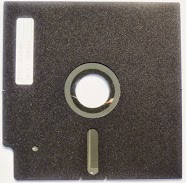
Photo Credit: Richard Hay for aNewDomain.net
Another gem from 1974 is the first Ethernet NIC developed for the Alto workstation at Xerox PARC. I was born in 1971. I am older than Ethernet. Woohoo.
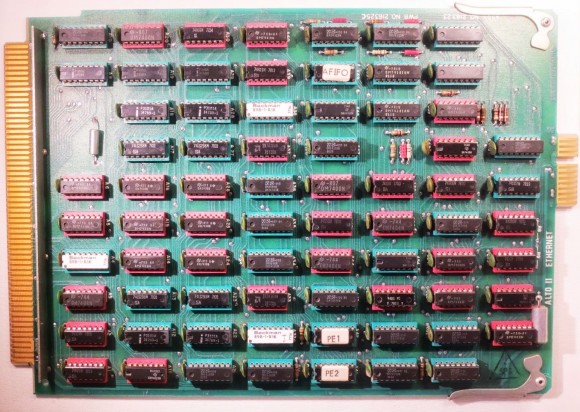
Photo Credit: Richard Hay for aNewDomain.net
So in WWII there was a saying “Loose Lips Sink Ships.” The “Don’t Copy That Floppy” was a similar sentiment to reign in software piracy back in the 1980s. Today this would be expressed as “do not use portable USB flash disks.” Or something about BYOB. Not.
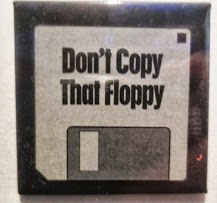
Photo credit: Richard Hay for aNewDomain.net
Of course I remember the 80s and the hit that was the Commodore64

Photo Credit: Richard Hay for aNewDomain.net
I actually used NCSA Mosaic, the world’s first web browser. I used the Unix version on a Sun Sparc Workstation. And it had things that were improved with Netscape Navigator, like loading the text of the page before trying to download images. Mosaic would download absolutely everything — before it would show you anything.
Considering the speed of the Internet and the dial-up level pipes in those days, this was an awful UI, but it was amazing compared to the “this does not exist” paradigm that preceded it.

Photo Credit: Richard Hay for aNewDomain.net
Looking at the exhibit below, I wondered: When was the last time you bought box software from a retail computer store?
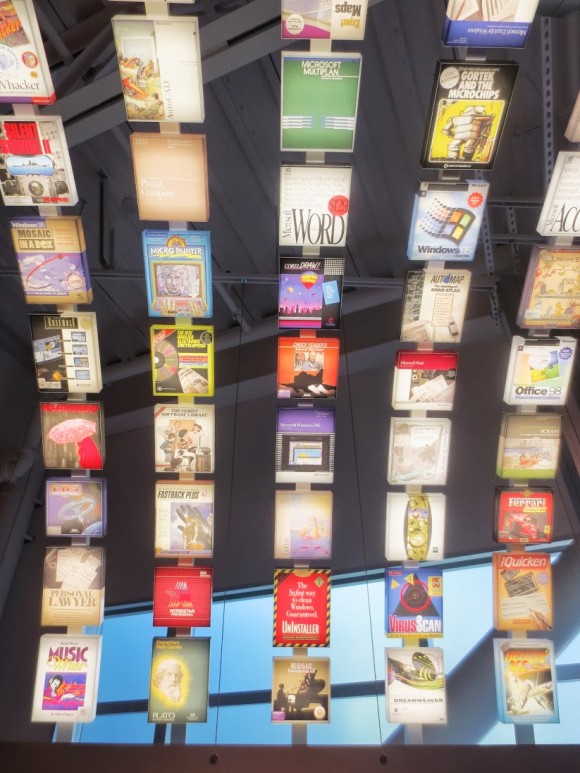
Now the Computer History Museum has a 10 year rule on what constitutes a item for display. That might be true in the means, but I found a display on Google Street View, which is definitely not a decade old.


Photo credit: Richard Hay for aNewDomain.net
I have the first Android Phone ever released — that was the HTC G1 Dream Phone released via T-Mobile in December 2008. It feels like a museum piece. But it won’t be old enough to be on display at the Computer History Museum for another five years.
Finally, no piece about the Computer History Museum would be complete without mentioning the replica of the Charles Babbage Difference Engine. When you visit, definitely check out the live demo they give of the device.
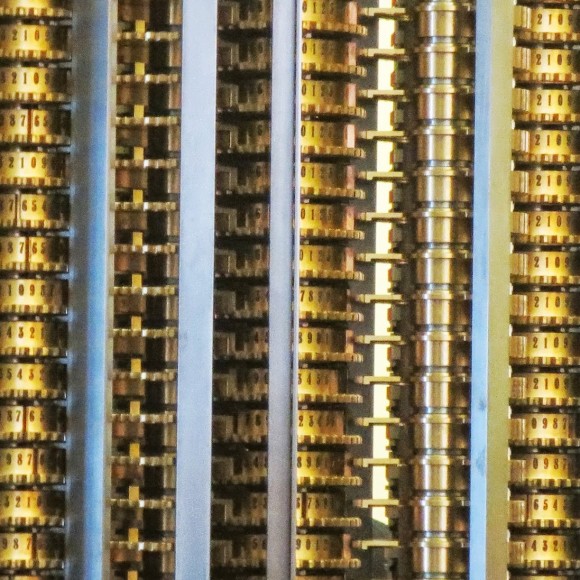
Photo credit: Richard Hay for aNewDomain.net
There is, I should note, a section of the American History Museum at the Smithsonian in Washington DC dedicated to tech history. There you find the ENIAC prototype and the serial number 1 FORE ATM switch. But having visited both Museums, I say the Computer History Museum, which is 100 percent dedicated to the history of computers, does a better job of presenting a story arc with better continuity than the Smithsonian does.
On the flip side there is a fee to visit the Computer History Museum in Mountain View, CA. The exhibits in DC are absolutely free.
I highly recommend visiting the Computer History Museum — do it after 10 a.m, so you are not fighting the Google Employees to exit on Shoreline Blvd. It provides insight into how a computer works and informs at a high level insight into what happens when you browse the Internet on a modern smartphone. Or when you watch Netflix. Or when you use a cloud computing service with shared computation at a mega data center thousands of miles away.
So if you are visiting Silicon Valley and want to find something worthwhile to visit, I recommend you head to the Computer History Museum. But do it after you swing by the house Steve Jobs lived in as a kid, drive by the garage where Hewlett Packard started up or visit the Apple Store at One Infinite Loop, Apple’s headquarters. Also, visit Stanford University, swing by the big thumbs up Facebook sign on Willow Road on the way to the Dumbarton Bridge and photo bomb of the Android statues at MTV building 44. After all that, head straight to the corner of the 101 and Shoreline.
For aNewDomain.net, I’m Richard Hay.
Richard Hay is science editor and a contributing editor at aNewDomain.net. He also has a day job as testing engineer at Google. Email him at Richard@anewdomain.net and follow him on Twitter @rhay.

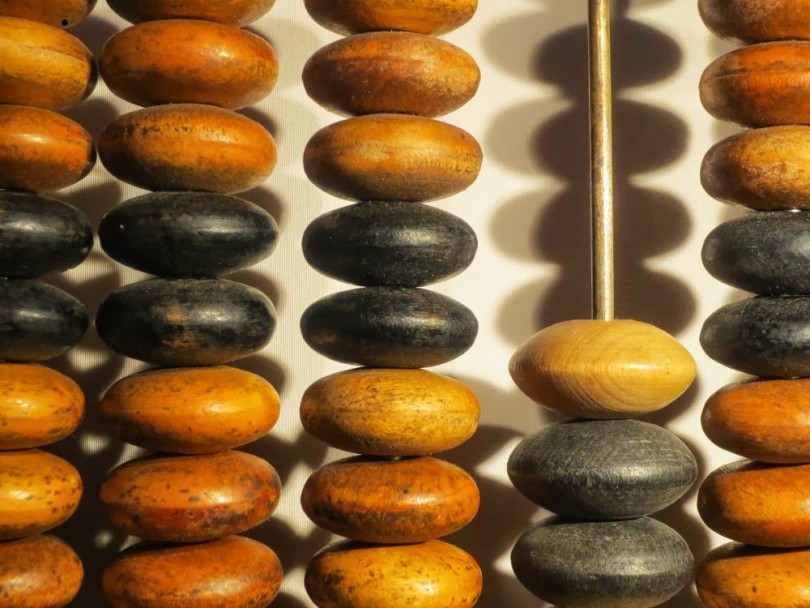


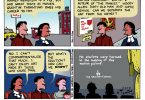



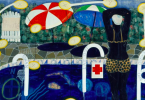
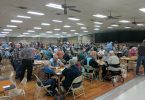




Great article!
This is a beautiful gallery tour.
the pic with gina, the banker and woz at his 60th birthday party is priceless. But they should do something about gina’s red eye!
Yes thank you Gina for adding the Wosniak 60th party pic. It adds a human touch. Also the bit about a mostly female team that developed the ENIAC. Really added to the piece.
[…] Computer History Museum: First 2000 Years of Computing, Photo Gallery by Richard Hay […]
[…] by Simon AND Schuster. I guess one did the even number pages and the other did the other. ENIAC, the first true computer, was conjured up by two men named Eckert and Mauchly. And of course, […]